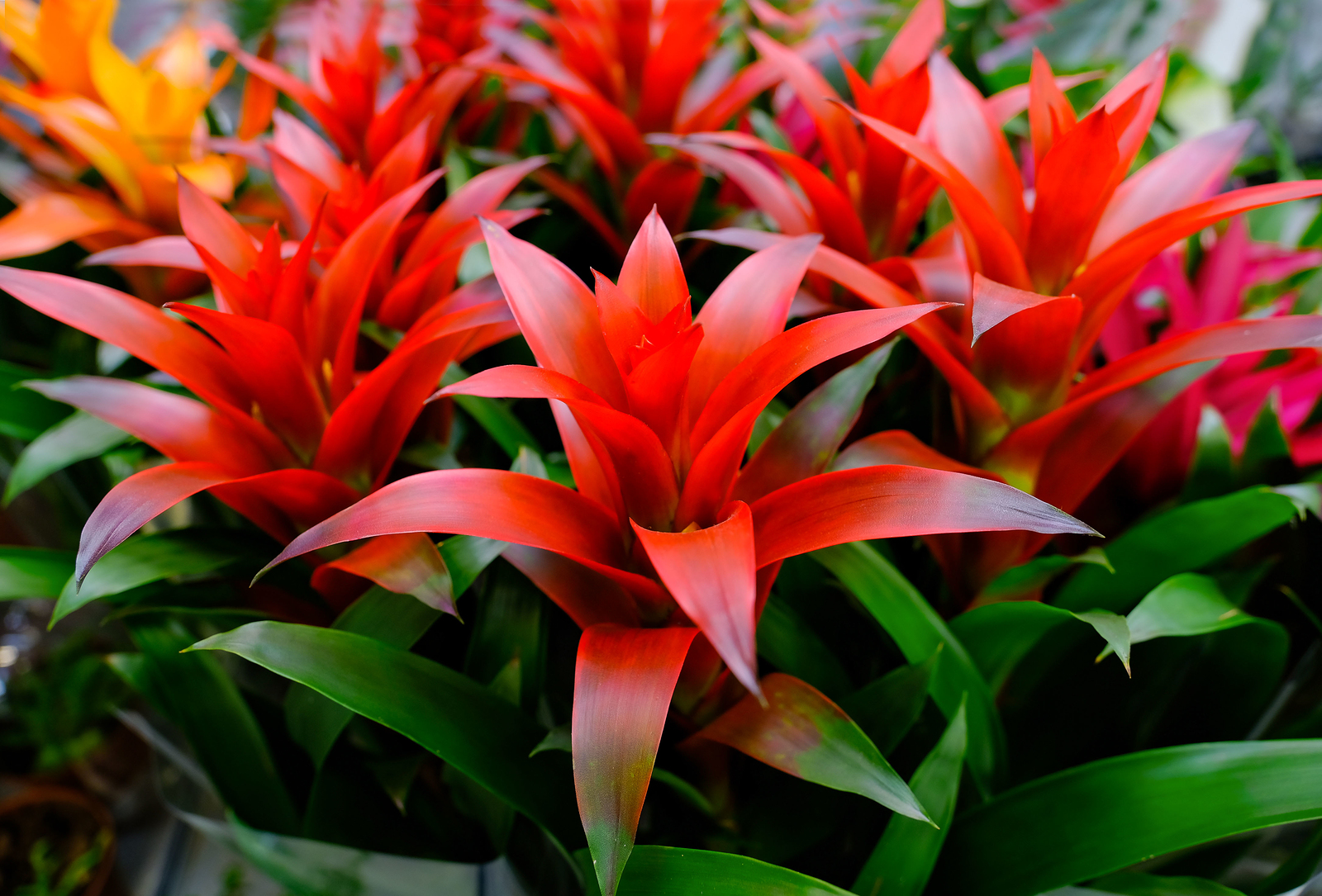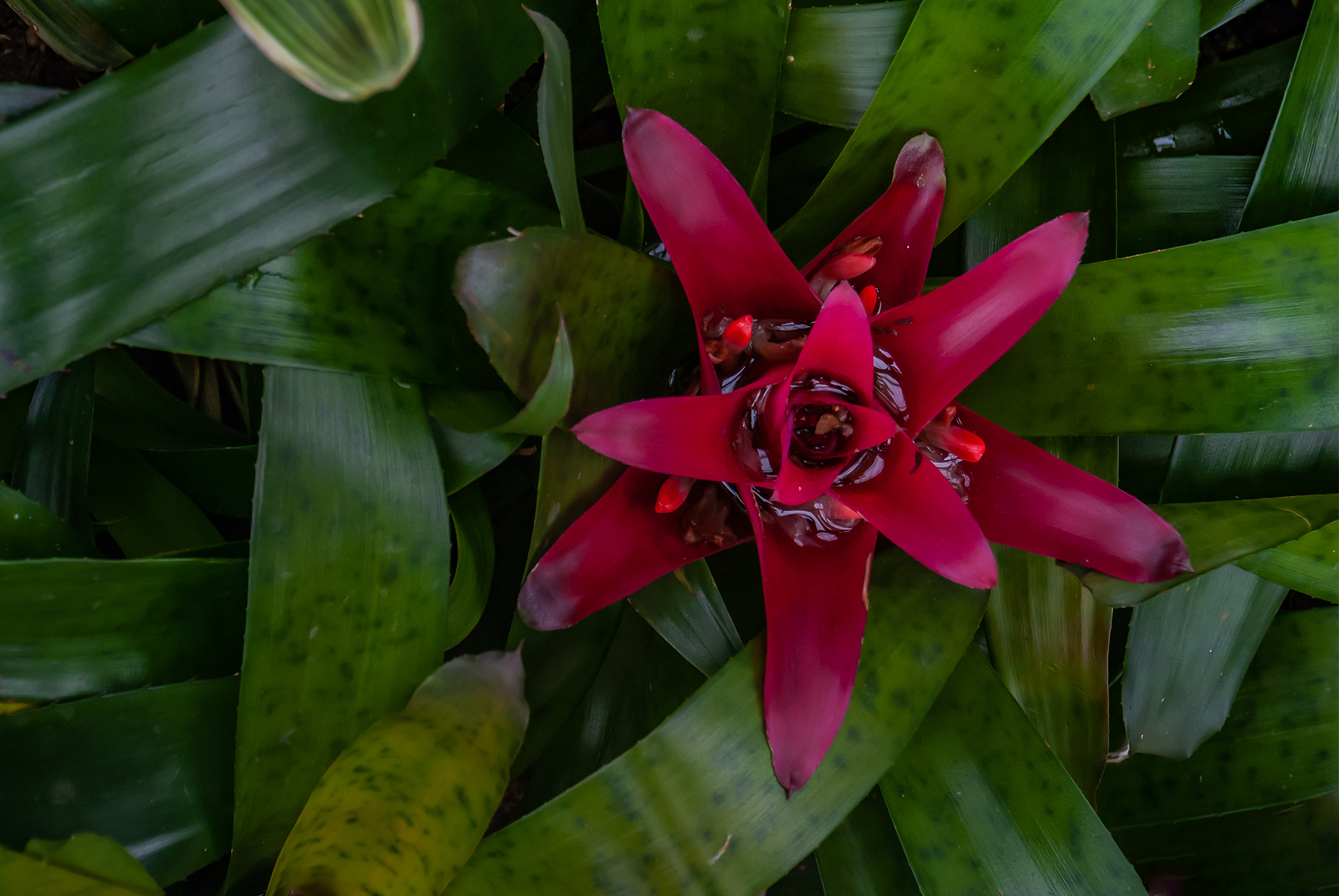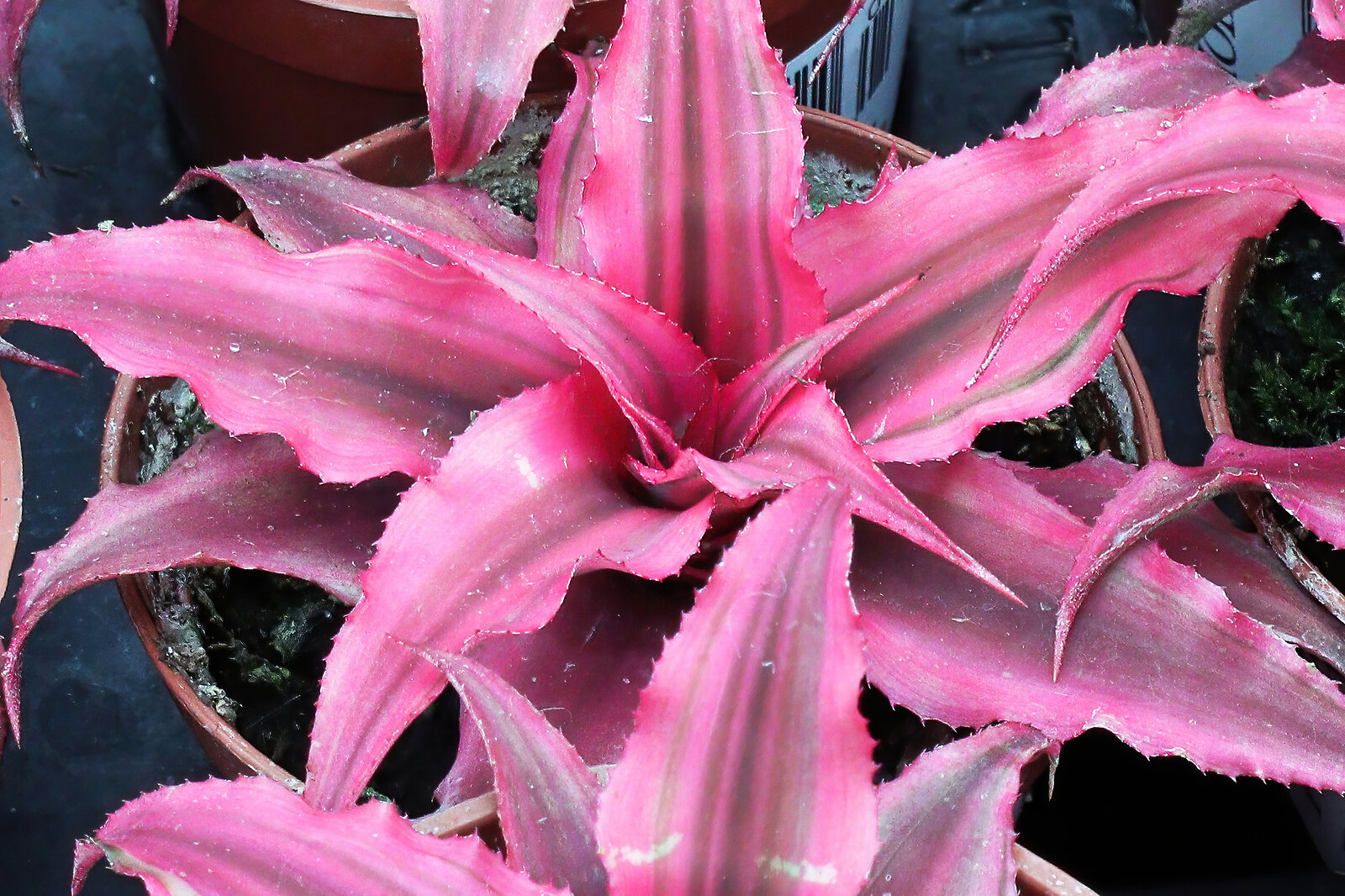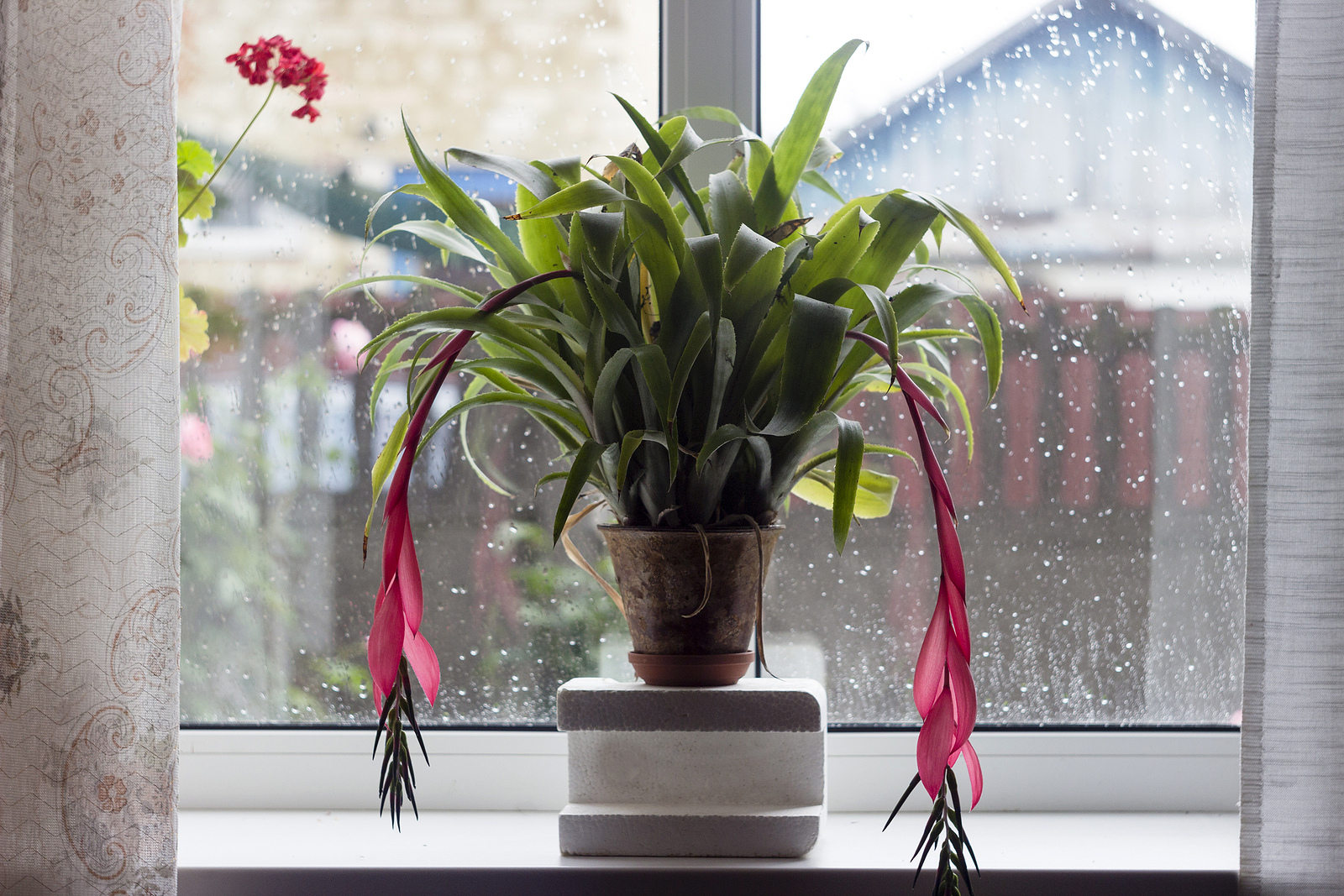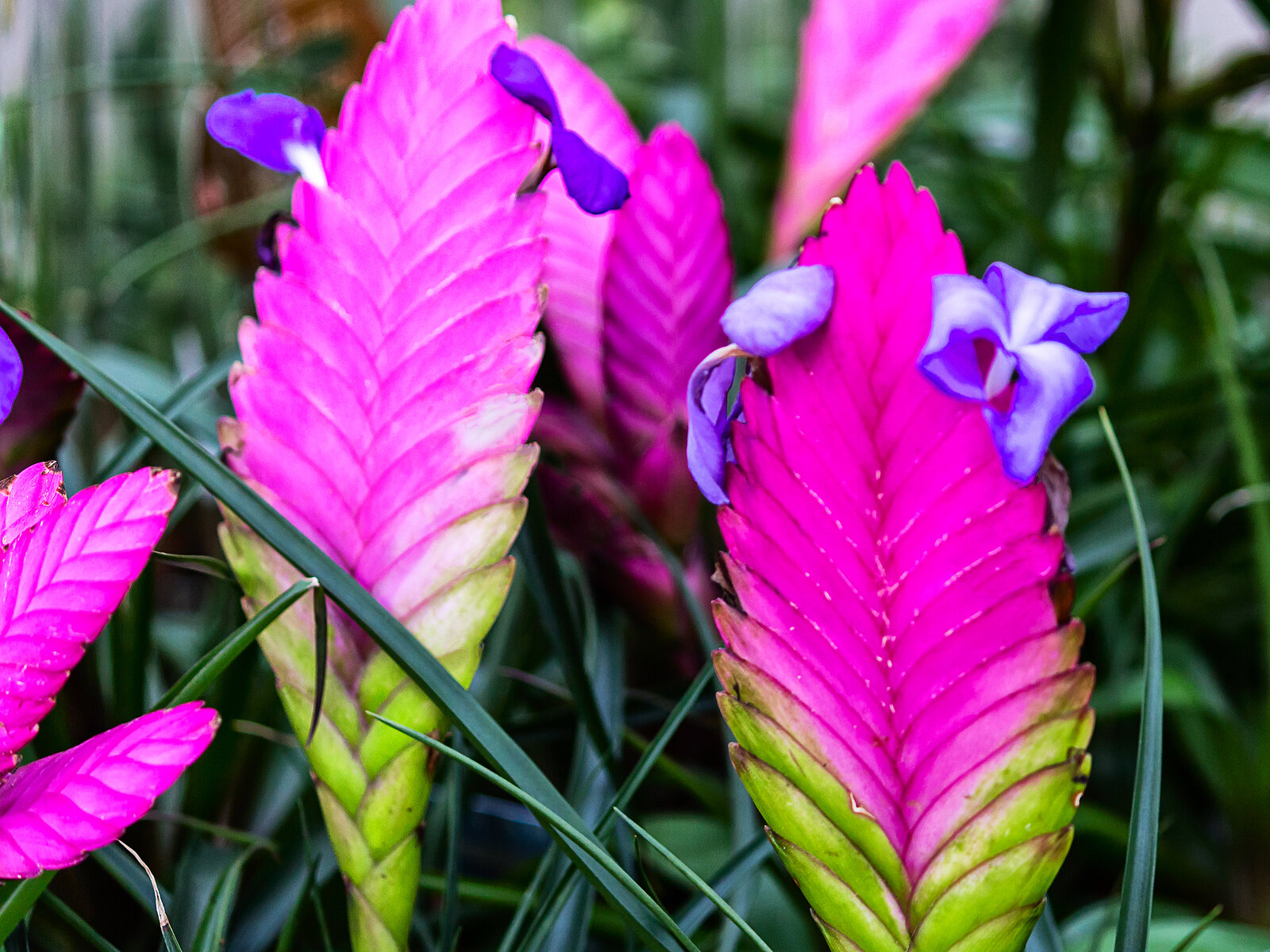Bromeliad
Latest stories
More stories
-
in Houseplants, Tropicals
How to Grow Nidularium
Nidularium is a genus of terrestrial or epiphytic bromeliads that produce rosettes of spiny-edged leaves; in the center of the plant, brilliant, red, bract-like leaves form a smaller rosette-like nest–thus the common name bird’s nest plants. Nidularium has dense, spreading, prickly-margined leaves that form a basal rosette that collects water. When the plant is about to […] More
-
in Houseplants, Tropicals
How to Grow Dyckia
Dyckia is a terrestrial bromeliad with silvery-gray and occasionally reddish-brown spike-toothed leaves and thorny tips. The leaves are borne in rosettes. Orange flowers appear atop slender stems in spring. Dyckia is often grown as a houseplant, but it grows well in tropical and subtropical gardens and in desert gardens where temperatures are not cold in winter. […] More
-
in Houseplants, Tropicals
How to Grow Earth Star — Cryptanthus
Cryptanthus are terrestrial bromeliads with rippled, variegated leaves in a flat rosette. They are so low-growing and flat that they are nicknamed earth stars. Cryptanthus are grown for their colorful and unusual leaves, not flowers. Cryptanthus is commonly called Earth Star. Cryptanthus leaves are often prickly, in shades of green, pink, copper, and bronze. Cryptanthus […] More
-
in Houseplants, Tropicals
How to Grow Vase Plant — Billbergia
Billbergia is a tree-dwelling (epiphytic) evergreen bromeliad that bears brightly colored tubular flowers surrounded by rose-pink bracts that dangle in clusters over rosettes of strap-shaped leaves. Flowers appear between spring and autumn and last for three to four weeks. Billbergia has stiff multicolored leaves that form rosettes. The unusual tubular blooms appear erect on a spike […] More
-
in Houseplants, Tropicals
How to Grow Pineapple — Ananas
Ananas–commonly called pineapple–is an evergreen, perennial bromeliad grown for its fruit in tropical and subtropical regions and for its foliage in cooler climates. Ananas produces rigid, strap-shaped leaves that form rosettes out of which rise large, dense oblong heads of tiny tubular flowers. The flowers are replaced by fleshy, succulent pineapples. Ananas flower spike bearing […] More
-
in Houseplants, Tropicals
How to Grow Guzmania
Guzmania is a genus of evergreen, mostly tree-growing (epiphytic) perennial bromeliads with colorful floral bracts that can be yellow, orange, or bright red. The bracts and the small yellow flowers they surround are borne above lance-shaped leaves that form funnel-shaped rosettes. Guzmania can be grown outdoors in any region where temperatures do not fall below 59°F […] More
-
in Houseplants, Tropicals
How to Grow Aechmea
Aechmea is a rosette-forming mostly tree-growing (epiphytic) evergreen perennial bromeliad. It bears spike-like inflorescences with long-lasting, brightly colored tubular flowers and triangular bracts. Aechmea has arching leaves that are narrowly strap-shaped or compound. The leaves in a rosette form a cuplike water reservoir. After two years, a flower stalk emerges from the center of the rosette […] More
-
in Houseplants, Tropicals
How to Grow Tillandsia
Tillandsia is a genus of tree-dwelling (epiphytic) and terrestrial or rock-dwelling evergreen perennial bromeliads. They are mainly borne in rosettes. Most species have tubular to funnel-shaped flowers among colorful floral bracts. Tillandsia are commonly grown in pots or as epiphytes on tree branches or slabs of bark. In some, leaf rosettes are bright green; in others, […] More
-
in Houseplants, Tropicals
How to Grow Vriesea
Vriesea is a genus of rosette-forming, evergreen, mostly tree-dwelling (epiphytic) perennial bromeliads. Vriesea species have long, leathery leaves and oddly shaped flower clusters. Vriesea can be grown as epiphytes in pockets of sphagnum moss on tree branches or in pots of loose, highly organic mix. They must be misted daily if grown indoors. Vriesea is a […] More

